Travellers to Korea in winter can see incredible sights, including snow-covered palaces, dazzling lighting festivals, and sparkling Christmas decorations. However, the true beauty of Korean winter can be seen in the small street stalls and steamy traditional restaurants selling hot Korean winter foods that power people through the cold days.
Long-suffering Koreans battle the brutal winter cold with a cocktail of spicy soups, boiling stews, salty snacks, and healthy meals. And a whole lot of fried food. From street food snacks to Korean winter dishes that are best shared, food is the weapon that keeps Korea fighting every winter.
Here are 20 of the best winter street snacks and traditional Korean dishes that you absolutely must sample this winter in Korea. They’ll lift your soul, warm your belly, and make your mouth water. Indulge in these culinary delights right now.
Affiliate Disclaimer: This site contains affiliate links and I may earn commission for purchases made after clicking these links.
Delicious Korean Winter Foods For You
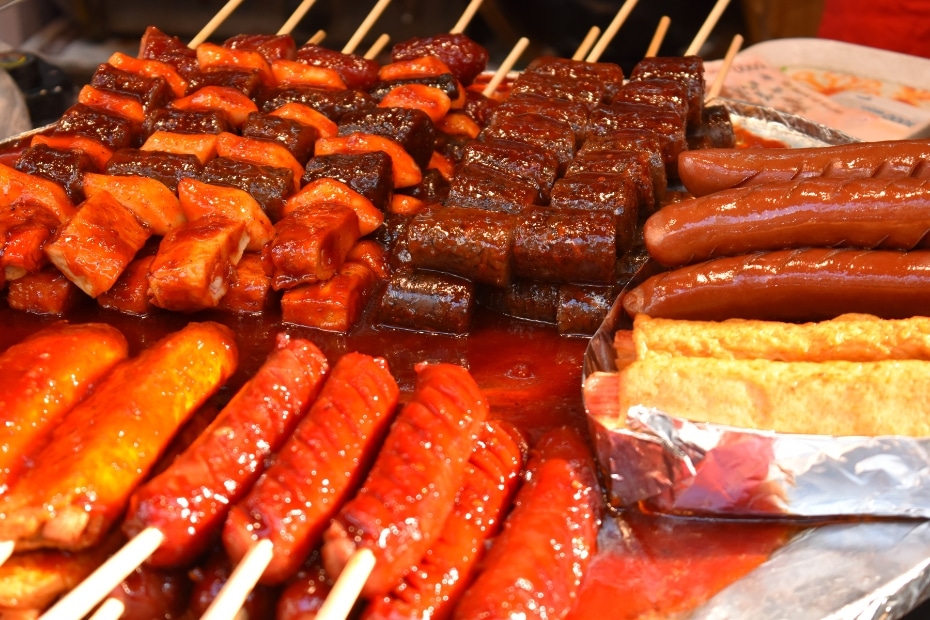
I want to introduce not only the best Korean winter foods you can enjoy in a cosy restaurant or cook at home, but also the best winter street snacks you can enjoy out and about as you travel.
If you want to know more about Korean food, then make sure you check out this finger-licking good guide to 20 of the best traditional Korean dishes you can discover in Korea.
Planning to visit Korea? These travel essentials will help you plan your trip, get the best deals, and save you time and money before and during your Korean adventure.
Visas & K-ETA: Some travellers to Korea need a Tourist Visa, but most can travel with a Korean Electronic Travel Authorisation (K-ETA). Currently 22 Countries don’t need either one.
How To Stay Connected: Pre-order a Korean Sim Card or a WiFi Router to collect on-arrival at Incheon Airport (desks open 24-hours). Alternatively, download a Korean eSIM for you travels.
Where To Stay: For Seoul, I recommend Myeongdong (convenient), Hongdae (cool culture) or Gangnam (shopping). For Busan, Haeundae (Beach) or Seomyeon (Downtown).
Incheon Airport To Seoul: Take the Airport Express (AREX) to Seoul Station or a Limo Bus across Seoul. Book an Incheon Airport Private Transfer and relax to or from the airport.
Korean Tour Operators: Tour companies that have a big presence in Korea include Klook, Trazy, Viator, and Get Your Guide. These sites offer discounted entry tickets for top attractions.
Seoul City Passes: Visit Seoul’s top attractions for free with a Discover Seoul Pass or Go City Seoul Pass. These passes are great for families and couples visiting Seoul – you can save lots.
How To Get Around: For public transport, grab a T-Money Card. Save money on Korea’s high speed trains with a Korea Rail Pass. To see more of Korea, there are many Rental Car Options.
Travel Money: Use money exchanges near Myeongdong and Hongdae subway stations for the best exchange rates. Order a Wise Card or WOWPASS to pay by card across Korea.
Flights To Korea: I use flight comparison sites such as Expedia and Skyscanner to find the best flights to Korea from any country. Air Asia is a good option for budget flights from Asia.
How To Learn Korean: The language course from 90 Day Korean or Korean Class 101 both have well-structured lessons and lots of useful resources to help you learn Korean.
Top 10 Korean Winter Street Foods
Winter in Korea is cold and tough, with temperatures often below 0 degrees Celsius even during the day. When you’re outside in the snow or cold weather, you’ll want something warm and satisfying to munch to cheer (and fill) you up.
Korean winter street foods, like all street foods in Seoul, are perfect for this and these salty, sweet, spicy (often all at once) dishes will warm your soul and give you the energy you need during winter. Below are 10 of the best, starting with my absolute favourite.
Want to see what winter Korean street food looks like? Check out this video about 5 of the best hot snacks to try when exploring Seoul and beyond this winter.
Hotteok – Korean Sweet Pancakes

Hotteok is one of the best Korean winter foods. You’ll find hotteok across Korea, from city streets to national parks. Walk along a busy street in Korea during winter and you’ll probably find a hotteok seller flipping and pressing down the balls of sticky dough filled with sweet syrup, cinnamon, and crunchy nuts that become hotteok.
The combo of fried, sweet, crunchy goodness in a hotteok, along with the warmth it gives you as you gingerly hold it, really gives you a boost.
Name in Korean: 호떡
Where to try hotteok in Seoul: Visit Hongdae Seoul Hotteok near Ahyeon Station for some of Seoul’s best hotteok, which comes in the classic sweet variety, as well as heart-shaped, or even served with ice cream.
Address in Korean: 서울특별시 마포구 굴레방로7길 20
You can see how the hotteok at Hongdae Seoul Hotteok are made in this video.
Bungeo-Ppang – Goldfish Bread With Red beans
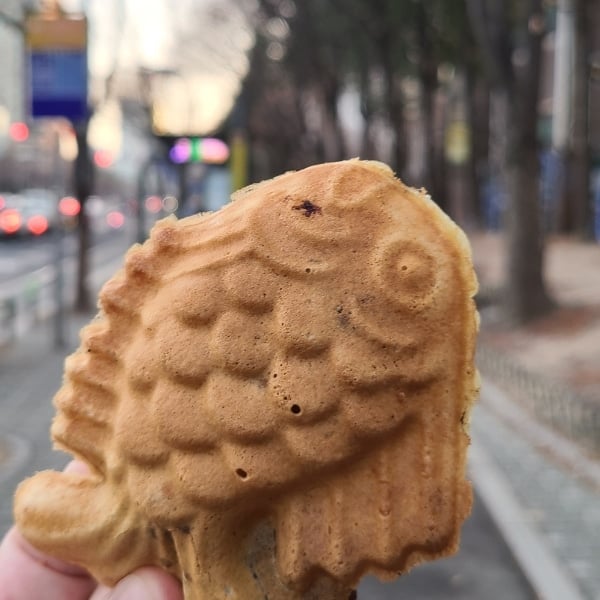
Arguably the most popular Korean winter food among locals and tourists alike is this cute goldfish bread, bungeo-ppang. Baked in a fish-shaped mould, this treat not only looks great, it also tastes great.
Stuffed with sweet red-bean paste, something you’ll find in a lot of Korean baked goods, this fish is a classic Korean winter snack. Crispy on the outside, sweet and delicious on the inside. Like most Korean winter snack foods, you’ll find these at street stalls and in traditional markets.
Name in Korean: 붕어빵
Where to try bungeo-ppang in Seoul: Visit Chonggakne Bungeoppang in Gwangjang Market near Jongno 5-ga Station to see a ‘sacred place for bungeo-ppang’. There are 4 varieties available – red bean with walnuts, custard cream, sweet potato and pizza.
Address in Korean: 서울특별시 종로구 창경궁로 88
Tteokbokki – Spicy Stir Fried Rice Cakes
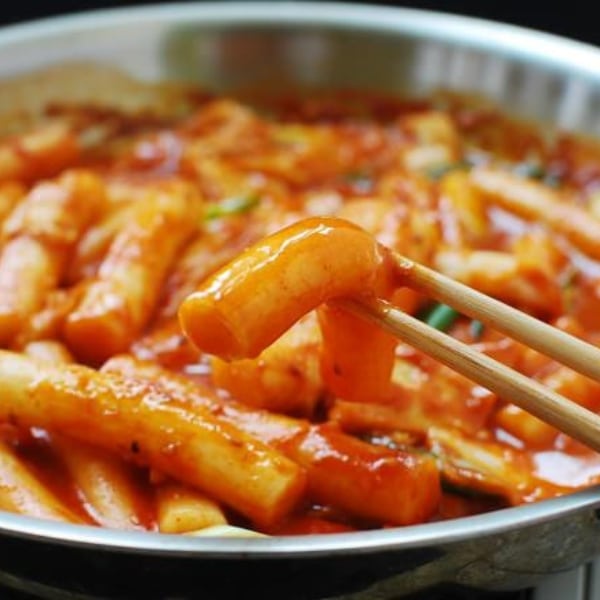
Tteokbokki is a blend of steamed and sliced rice cakes (tteok 떡), fish cakes (odeng 오뎅), and scallions in a sweet and spicy sauce with plenty of chili paste. Be careful, some portions of tteokbokki can be very spicy.
This is one of the best Korean winter foods that you shouldn’t pass up if you’re exploring Korea’s traditional markets, such as Gwangjang Market in Seoul. Best eaten fresh from the market vendors, this spicy, salty mishmash of classic Korean ingredients is certainly perfect as a snack or meal.
Name in Korean: 떡볶이
Where to try tteokbokki in Seoul: Head to Mukshidonna in Samcheong near Bukchon Hanok Village to enjoy tteok-bokki as a meal from a big metal pot full of delicious red treats cooked at your table. Make sure you come here hungry as you’ll be full up afterwards.
Address in Korean: 서울특별시 종로구 율곡로3길 74-7
4: Eomuk – Fish Cakes
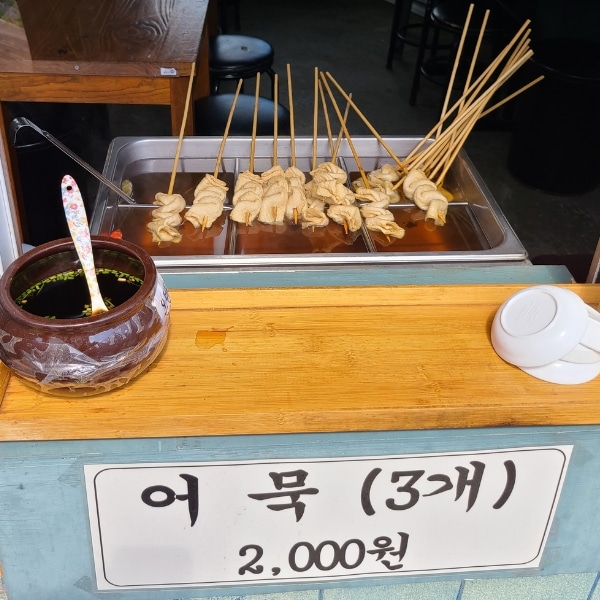
A trip to Korea wouldn’t be complete without sampling eomuk and all its fishy goodness. These cheap, delicious fish cakes on a stick can be found across Korea in markets, festivals, convenience stores, train stations, and even at the top of mountains.
The fish cake is cut thickly and skewered on a wooden stick. It’s best eaten with a paper cup full of the soup it’s boiled in. Grab some and find out why it’s one of the best Korean winter foods. Busan is famous for eomuk, so be sure to try it there.
Name in Korean: 어묵
Where to try eomuk in Seoul: As with all good Korean winter foods, the best places to try eomuk are at the traditional markets. Check out the Seoul Folk Flea Market to enjoy traditional eomuk as you wander around the antiques and goods at this unique market.
Address in Korean: 서울특별시 동대문구 신설동 천호대로4길 21
See what this popular Korean winter food, eomuk, looks like in the video below. See how big and thick the slices are!
5: Gun-Bam (군밤) Roasted Chestnuts
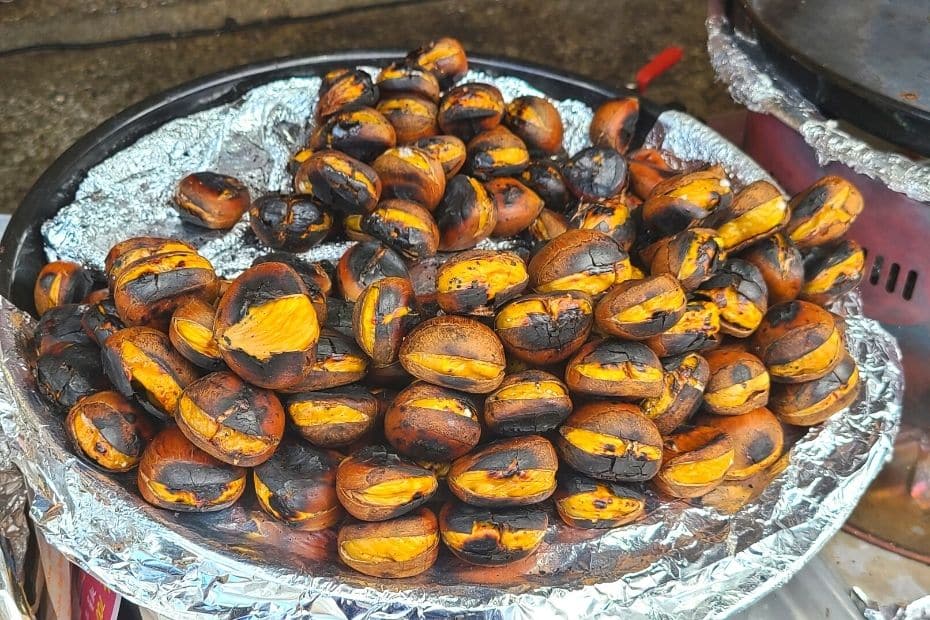
Chestnuts are plentiful in South Korea and they’re added to many Korean dishes (and even makgeolli). One of the best ways to try them is roasted over a fire or in a hot drum.
The heat cracks their shells and cooks the nut inside, allowing you to easily open up the chestnut and get to the warm, nutty goodness inside.
Huddle up around the fire and stay warm while you wait for your bag of freshly toasted wholesome nourishment.
6: Gun-Goguma (군고구마) Roasted Sweet Potatoes
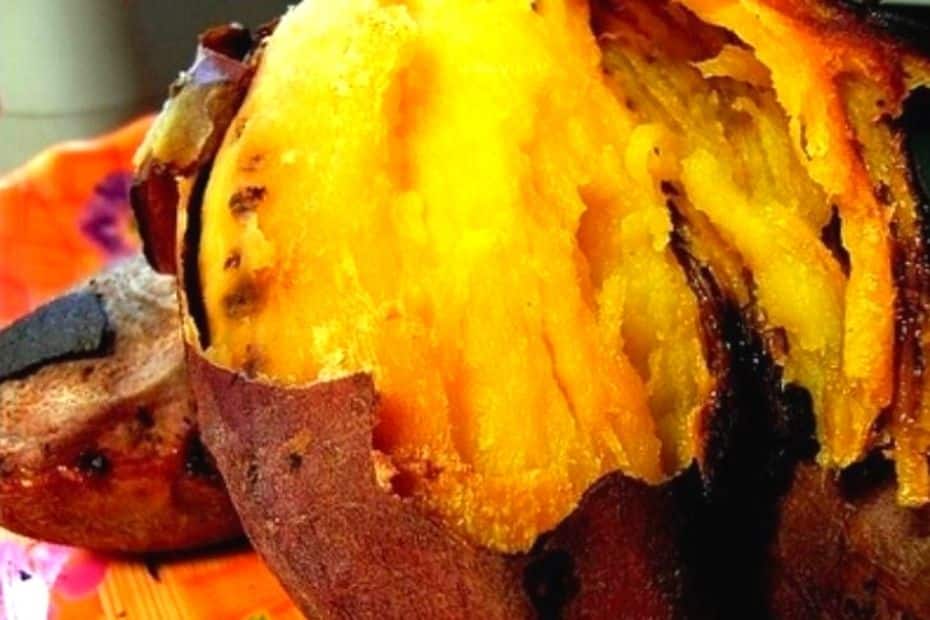
Along with roasted chestnuts, you’ll also find lots of people selling roasted sweet potatoes in winter time in Korea.
Wrapped in a simple piece of paper, feel the warmth flowing out from this healthy snack as you hold it and pick apart the skin to get to the hot, sweet potato flesh inside.
These are a messy but wonderful treat that you can eat as you explore Korea’s parks and public spaces.
7: Hodu-Gwaja (호두과자) Walnut Cookies
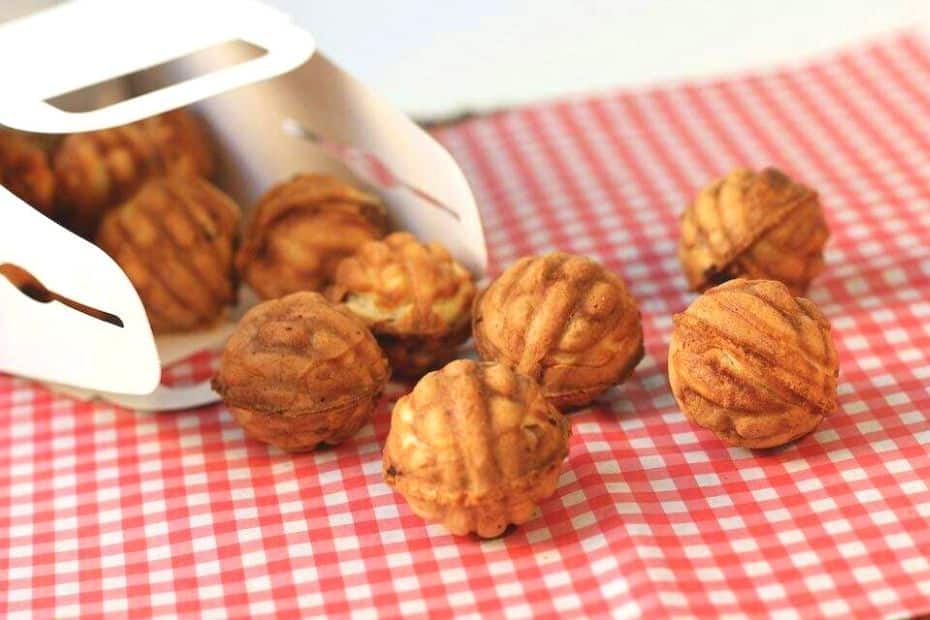
Hodu-gwaja are baked treats made from flour and crushed walnuts and filled with red-bean paste. They’re baked in a walnut-shaped mould to give them this distinctive shape.
A Korean staple for a long time, these little bite-sized baked balls of goodness are certainly one of the best Korean winter snacks to share. Grab a dozen and munch them as you go, or share them with friends or family.
8: Gyeran-Ppang (계란빵) Egg Bread

A classic street food from the food stalls of Myeongdong Market and similar places. You should certainly grab one of these whilst out shopping for bargains.
This delectable dish is as simple as it sounds – an egg on top of a slice of toasted bread. Hot, gooey, a bit messy, and yet so warming and satisfying on a cold winter’s day.
Even better, they’re really cheap. That makes them perfect as a snack or a cheap breakfast on the go, so be sure to pick one up.
9: Ramyeon (라면) Instant Noodles
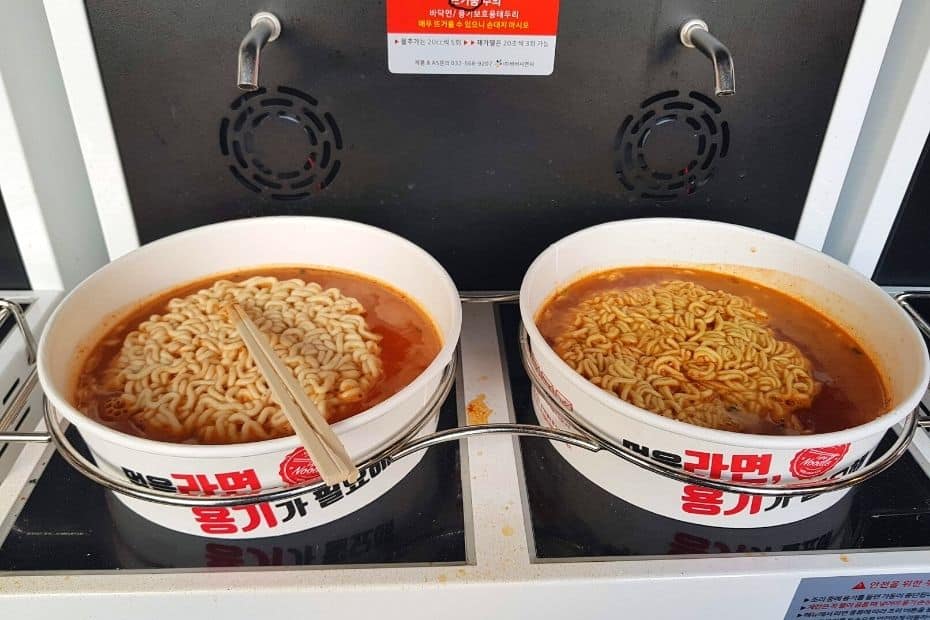
Ramyeon noodles feature in several of these Korean winter foods, but a bowl of steaming, spicy instant noodles makes for a great snack or light lunch on a cold winter’s day by themselves.
You’ll find ramyeon noodles absolutely everywhere in Korea, with dedicated sections of convenience stores ready to help you prepare them that come with chopsticks and boiling water.
In some places you might even find machines dedicated to making ramyeon, like the one in the picture above.
Wanna know more about Korean ramen? Check out this article for the 12 Best Korean Ramen.
10: Korean Hot Dogs (핫도그)

Korean hot dogs (AKA corn dogs) and gamja hot dogs (potato-covered hot dogs) are a strange mix of sweet and salty that provide a cheap, delicious snack any time of year.
These hot dogs are coated in a batter before being deep fried and topped with sugar… and then tomato ketchup and mustard. Yes, an unusual combination, but one that works well.
Grab one of these Korean hot dogs from street food stalls or even in dedicated hole-in-the-wall style restaurants that specialise in these snacks. Try the cheese ones, too.
Want To Try A Korean Cooking Course In Seoul?
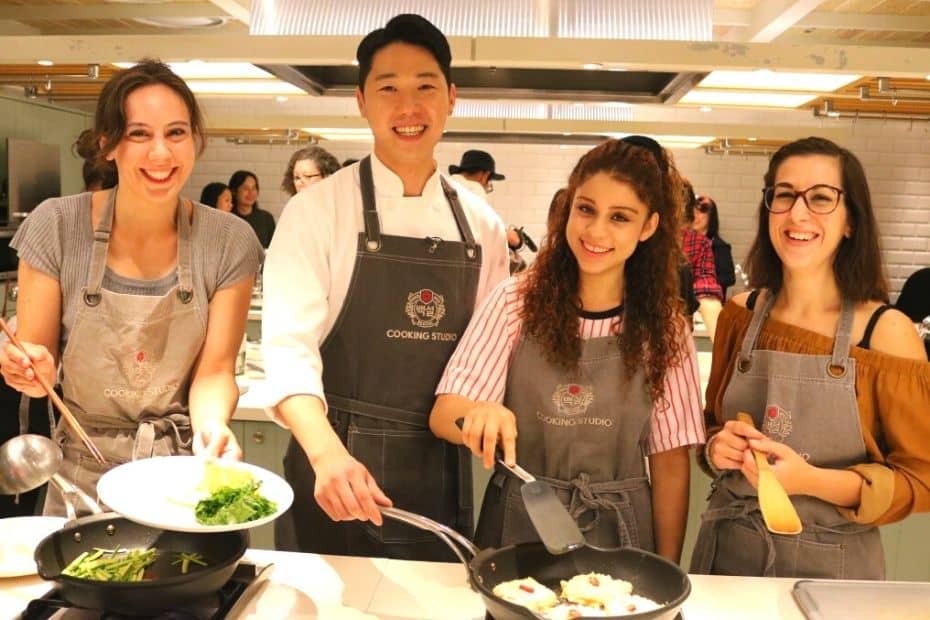
Why don’t you try learning a new skill when you visit Seoul? Enjoy making a range of delicious Korean dishes for any weather with a Seoul cooking course. Learn to make delicious Korean dishes to share with your friends and family and take home more than just souvenirs.
Top 10 Korean Winter Dishes
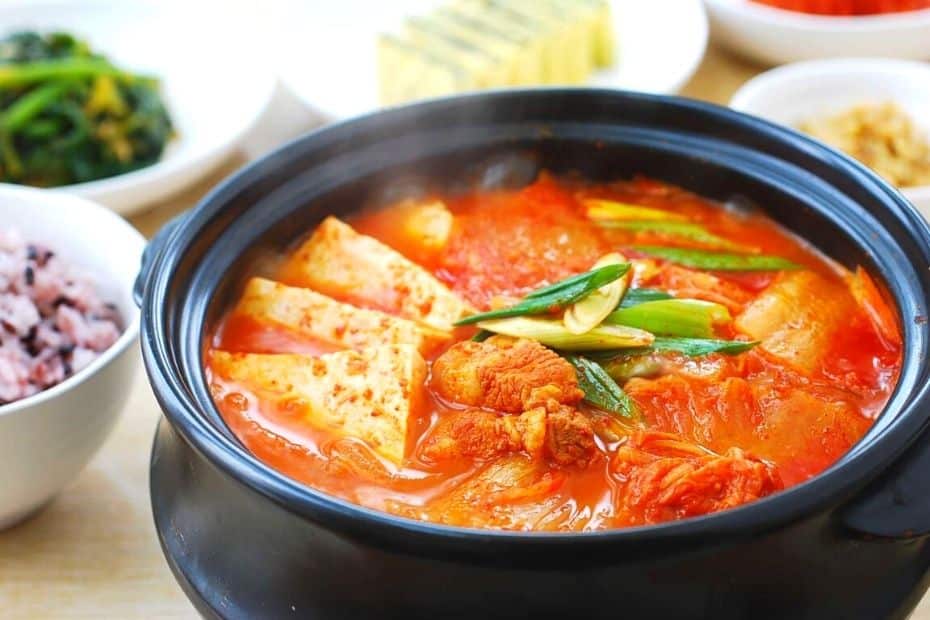
If the cold weather is too much, duck into a traditional Korean restaurant and sample some of these belly-warming Korean winter dishes.
From healthy chicken rice-porridge, to spicy kimchi dishes, and savoury dumpling soups, there’s something for everyone to enjoy during winter in Korea.
Here’s 10 of the best Korean winter foods that I’m sure you’ll love.
1: Kimchi-Jjigae (김치 찌개) Kimchi Stew

Kimchi-jjigae, one of my favourite Korean dishes, is great for lunch or dinner and really fills you up. Any jjigae (stew) is going to be perfect to recover from the cold, but kimchi-jjigae is the best.
This meal is a delightful mix of cabbage kimchi, tofu, cellophane noodles, pork, and vegetables, with a dish of rice and obligatory side dishes called banchan, served in a large bowl for two or more people.
When the kimchi is sautéed, it becomes softer and releases all its flavour into the stew, creating a hearty broth. The best way to eat it is to put a bit of rice on your spoon, dip it in the broth, then top it with the other ingredients.
2: Dolsot Bibimbap (돌솥 비빔밥) Stone Bowl Mixed Rice
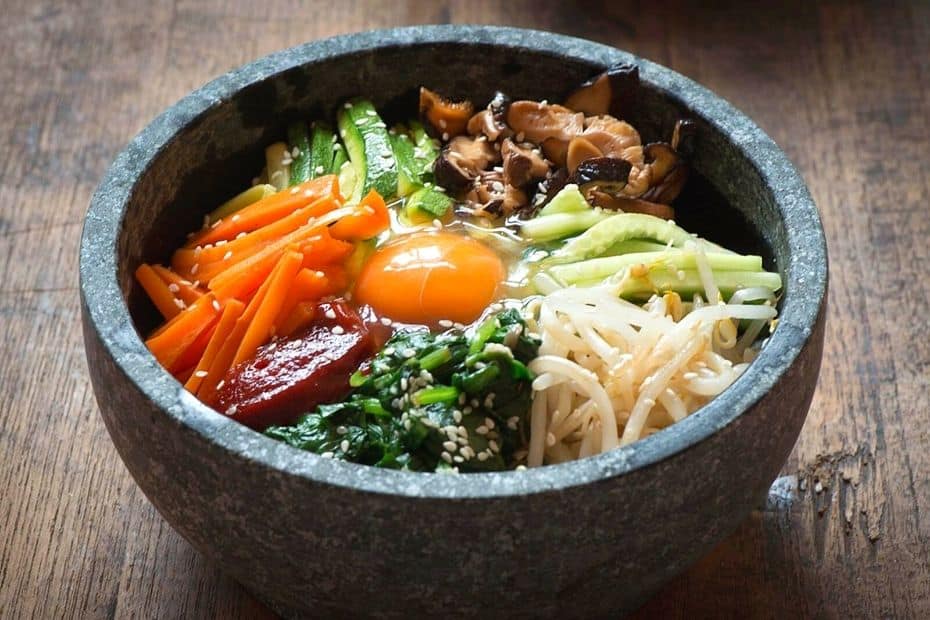
This is the winter version of one of Korea’s most popular and famous foods – bibimbap. Whereas regular bibimbap is served cold, this hot stone bowl version really mixes things up.
Instead of a fried egg, a raw egg is dropped on top and mixed together with the rice, vegetables, sauces, etc. This creates a kind of egg fried rice that is both delicious and healthy.
Not only that, the rice sticks to the edge of the bowl and at the end you can peel it off for a crispy snack. Alternatively, add water to the empty bowl to make a healthy rice drink.
3: Dak-Galbi (닭갈비) Spicy Stir Fried Chicken
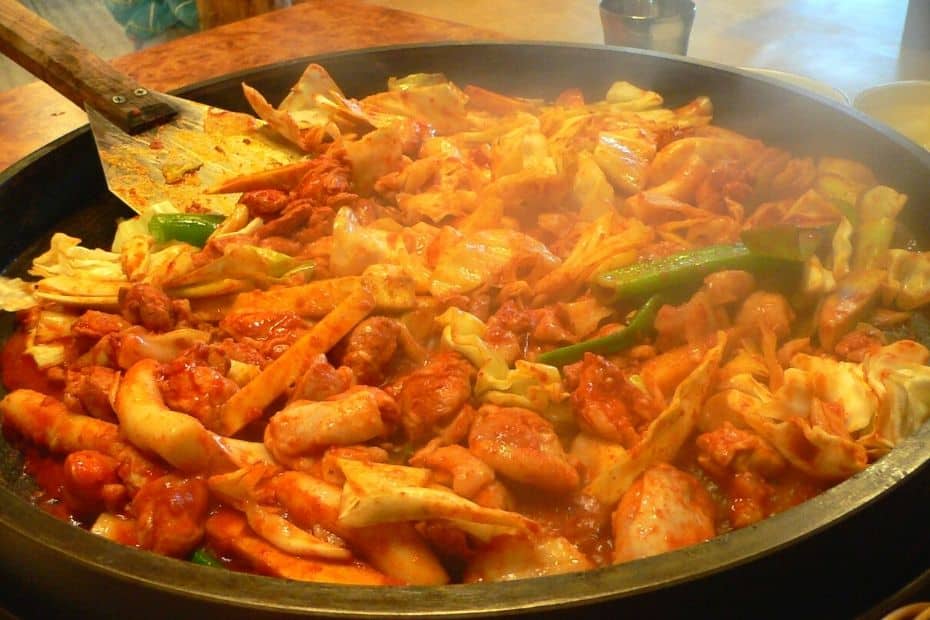
Dak-galbi is a Korean winter food best shared with others. This dish combines marinated chicken with a bunch of vegetables, rice cake (tteok 떡 ), chili paste sauce, and other spices. You can also add in noodles and cheese.
These ingredients are chucked in a large pan and stir-fried at your table. Be careful, though, this is also a very messy dish and you’ll want to wear an apron as you can easily splatter yourself with the sauce! Dak-galbi is a meal to experience, not just eat
4: Kal-Guksu (칼국수) Knife-Cut Noodle Soup
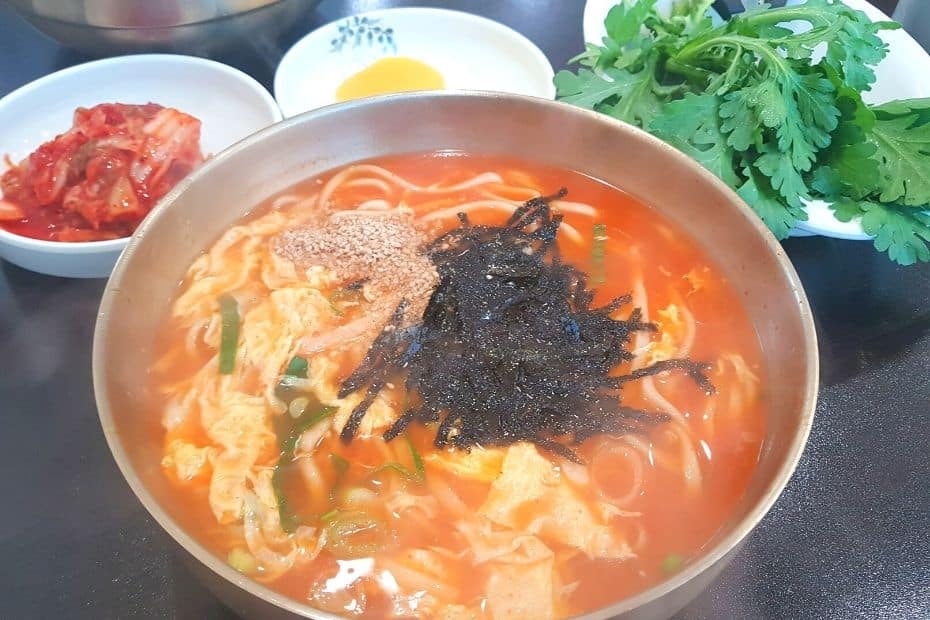
Literally meaning knife-cut noodles, kal-guksu has chunky noodles because they are cut by hand and not spun. This gives the noodles a rich taste and make them the star of the dish. Extra ingredients might include shellfish, ground beef, chicken, some vegetables, or cilantro.
The best kal-guksu restaurants will be busy in winter, and that’s a good sign that they serve a great dish. A perfect Korean winter food, this hot, steaming broth can refresh any weary traveller.
5: Budae-Jjigae (부대찌개) Army Stew
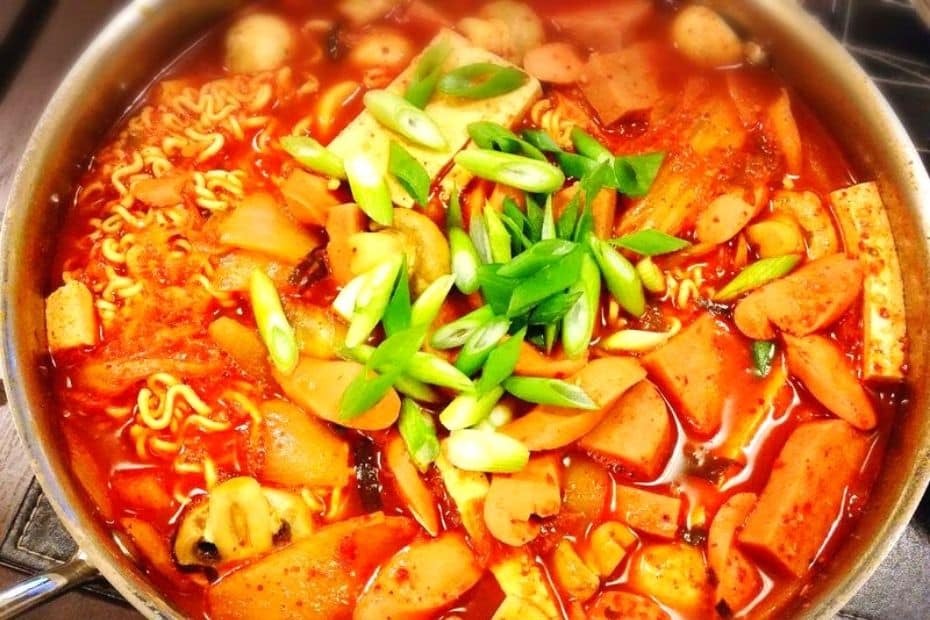
Budae-jjigae is spicy, delicious, warming and stuffed with things that aren’t very healthy, which makes it a great Korean winter food. Packed full of meat, noodles, rice cakes, and lots of other rather unhealthy foods, it’ll leave you feeling satisfied and full.
This unique fusion of American and Korean cuisine has created a marriage of Western products (SPAM and baked beans) and traditional Korean ingredients that is a great tonic to the winter blues.
6: Juk (죽) Korean Rice Porridge

If you’re feeling unwell or suffering from the coldness of winter, then this is the Korean winter food for you! I always eat this porridge when I’m feeling sick.
Korean rice porridge is full of healthy ingredients in a range of varieties, from plain old rice porridge to chicken, red bean, shrimp, and even abalone porridge.
If you’re feeling down or want a healthy winter treat, be sure to head to one of the many juk restaurants throughout Korea and you’ll certainly feel better.
7: Samgyeopsal (삼겹살) Korean BBQ
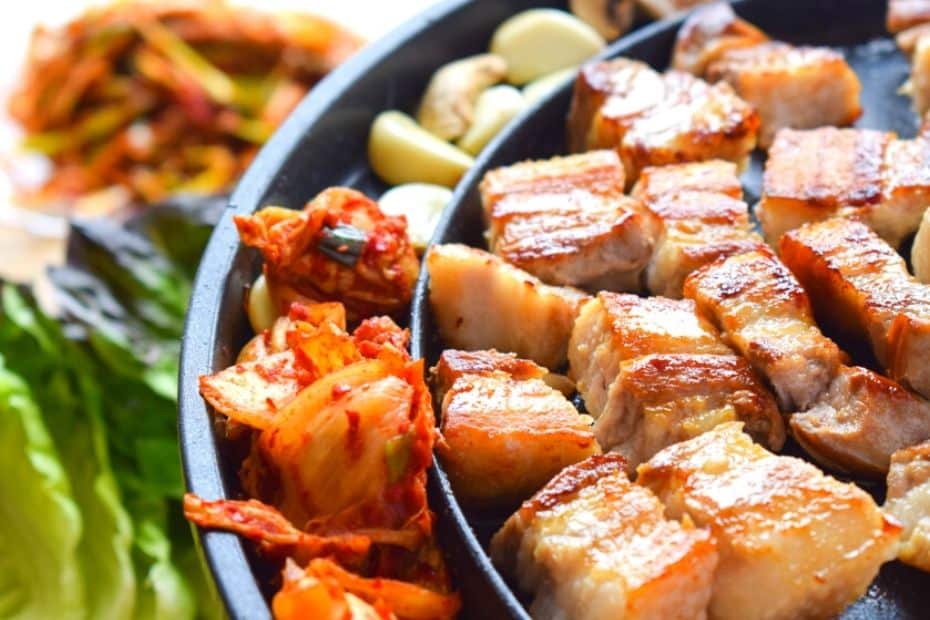
I’ll admit, this is not only one of the best Korean winter foods, it’s also one of the best Korean foods ever. If you’re visiting Korea during winter, you will find many people enjoying a meal of smoky Korean BBQ.
Slices of samyeopsal (pork belly) fry on the blazing fires in front of you, whilst you patiently wait to pick them out, wrap them up with other ingredients, and stuff them in your mouth. A Korean BBQ is another ‘meal experience’ that is best enjoyed with friends or family.
8: Dakbal (닭발) Super Spicy Chicken Feet
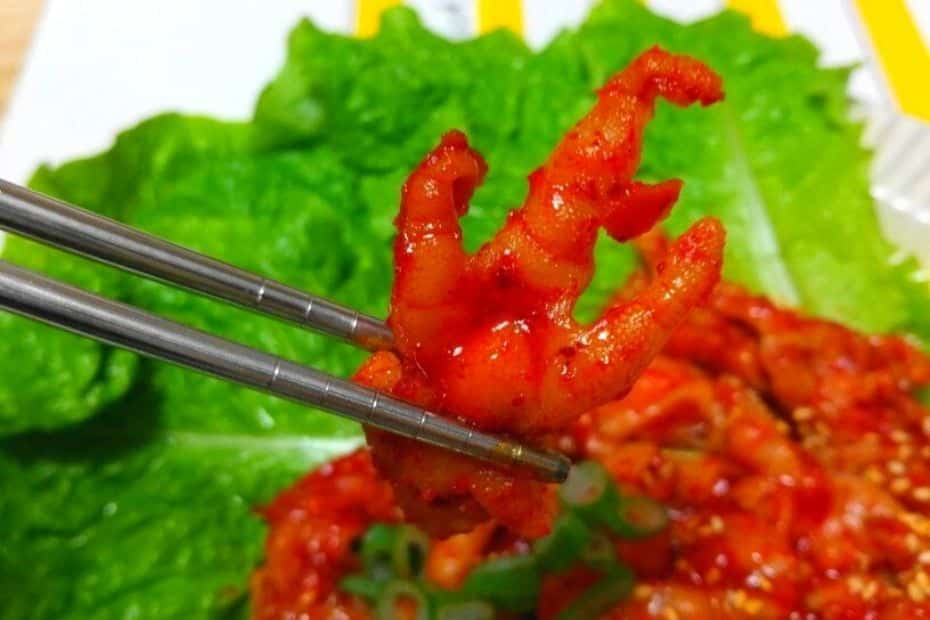
This Korean winter food might give some people a bit of culture shock. Dakbal, literally meaning ‘chicken foot’, is exactly what you’d imagine it is. It’s probably the spiciest of all the Korean winter foods on this list, too, so be careful!
This is a very popular dish with Koreans who want to go out, drink lots of beer and enjoy super spicy food. Dakbal restaurants are lively and filled with Koreans having a good time. If you feel brave enough, try it and see what the big deal is about.
9: Mandu-Guk (만두국) Dumpling Soup
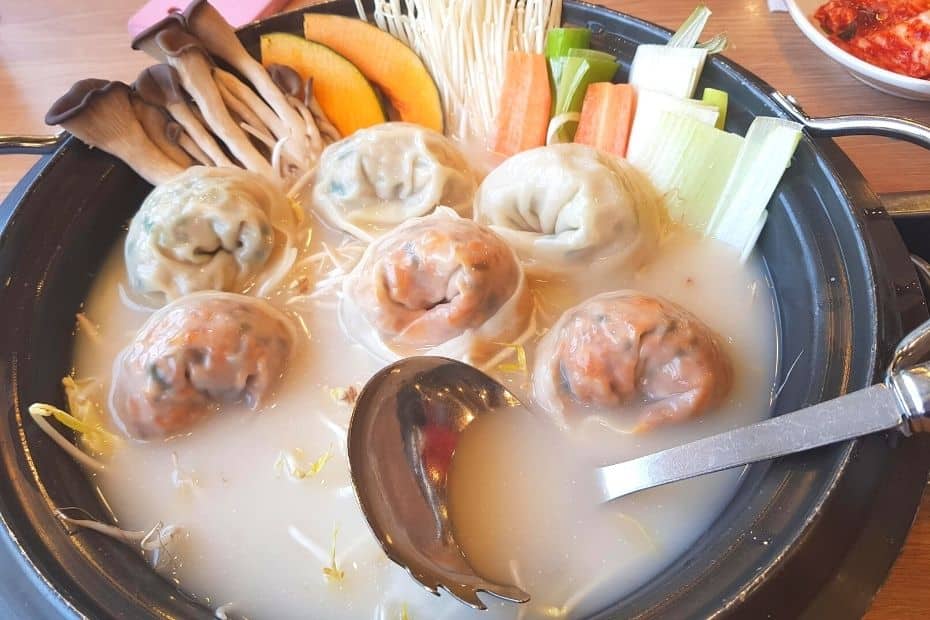
A good mandu-guk will be packed full of freshly wrapped dumplings filled with kimchi, meat, or seafood. Also squeezed in with the dumplings, you might find tteok 떡 (rice cakes), sliced vegetables, ground meat, or even an egg.
Koreans start the New Year with a bowl of mandu-guk, cementing its claim as a Korean winter food. If you’re in Korea at the time, be sure to try it.
10: Jjamppong (짬뽕) Spicy Noodle Seafood Soup
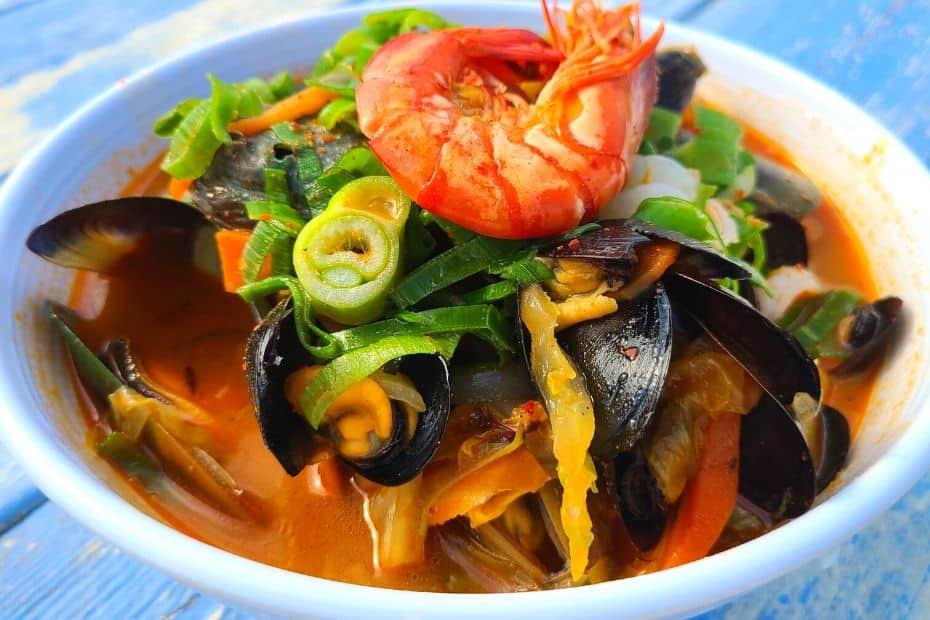
Although jjamppong is referred to as a ‘Chinese’ dish in Korea, it is undeniably a part of Korea’s arsenal of culinary defence against winter cold and a perfect dish for a winter’s day in Korea.
Packed full of seafood (or sometimes pork) and thick noodles in a steaming, spicy soup, jjamppong goes straight to your stomach and radiates heat all through your body. It’s filling, satisfying, and will leave you feeling stuffed.
Hungry For More Korean Food?
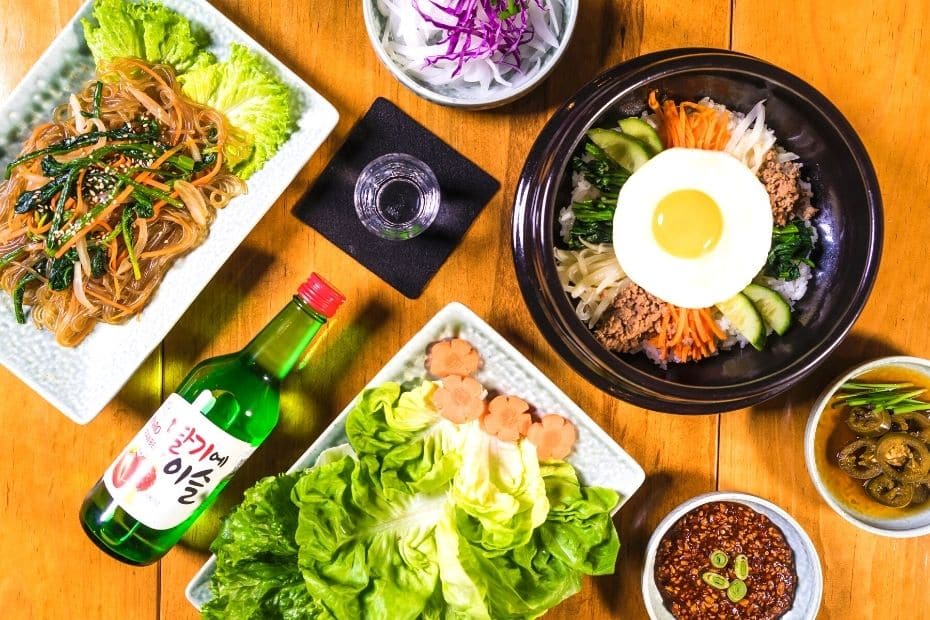
If this article has whetted your appetite for more delicious Korean dishes, how about some weird Korean dishes instead? Are you brave enough to try them? Of course, knowing what you want to eat is only half the battle, figuring out how to order food in Korean will really help you embrace Korea.
Try Amazing Korean Winter Foods In Seoul
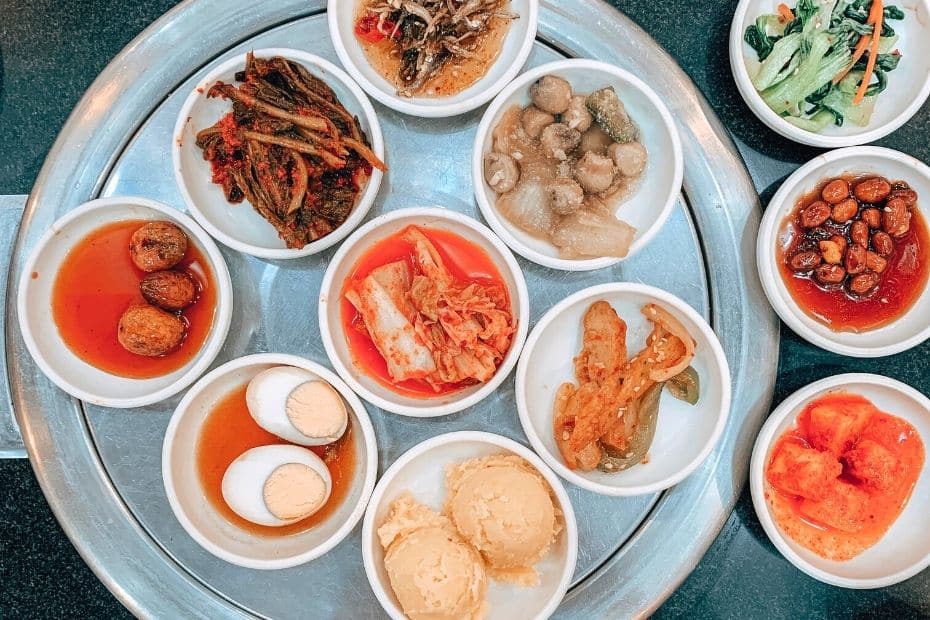
Not sure where to eat Korean winter dishes in Seoul?
Why not book a Seoul Night Food Tour in Seoul and experience some of the most delicious, soul warming foods that are loved by locals and tourists alike. Visit Euljiro, a sacred place for Korean hipsters with a local guide, experience real Korean ‘hansik‘ through Korea’s beloved foods, and learn about the history of Euljiro and Cheonggyecheon.
Alternatively, experience Seoul’s best winter food with a Gwangjang Market Food Tour, giving you the chance to try the best traditional and modern street foods. Take an insider’s look at Seoul with this walking tour of Gwangjang Market, Chenggyecheon stream and Heunginjimun Gate. Learn about Korean culture and try popular local foods on the way.
Learn To Make Korean Winter Dishes At Home
Want to try making these winter dishes at home but not sure where to start? Here are some Korean cookbooks to teach you how to make a range of tasty Korean treats. Start with the basics, such as tteokbokki and mandu, or jump straight into filling meals like kimchi jjigae and jjamppong. Also, be sure to buy a stone bowl for those tasty winter stews and soups.
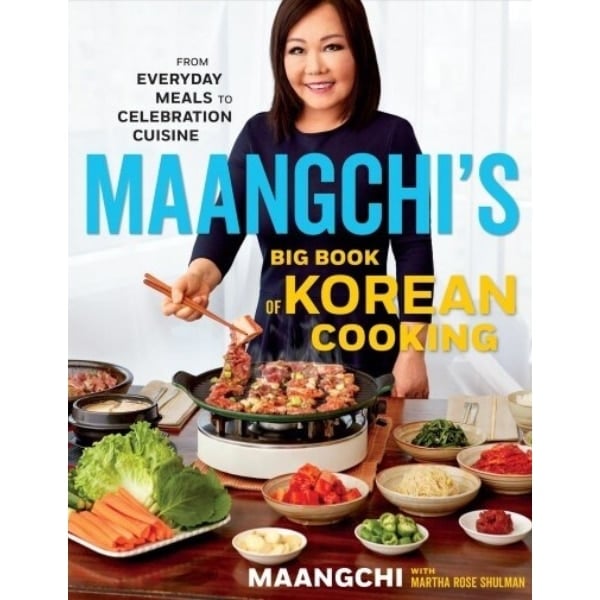
Maangchi’s Big Book Of Korean Cooking
The book contains the favourite dishes by famous Korean chef and YouTuber, Maangchi. She has perfected many Korean meals over the years, from Korean barbecue and fried chicken to bulgogi and bibimbap. Discover Maangchi’s professional approach to Korean cooking today.

The Korean Vegan: Joanne Lee Molinaro
Joanne Lee Molinaro has captivated millions of fans with her powerfully moving personal tales of love, family, and food. In her debut cookbook, she shares a collection of her favorite Korean dishes, some traditional and some reimagined, as well as poignant narrative snapshots that have shaped her family history.
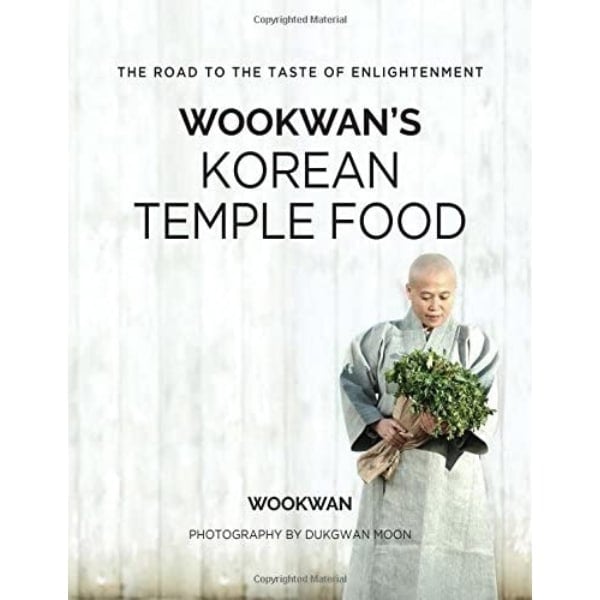
Wookwan’s Korean Temple Food
As the first volume of temple cuisine published in English, Wookwan herself has written an elegant volume that introduces the reader to Korean temple food, including what it means to care for the ingredients at each step of preparation, following the three key principles of cooking temple food, interspersed with her own accounts and tips among the recipes.
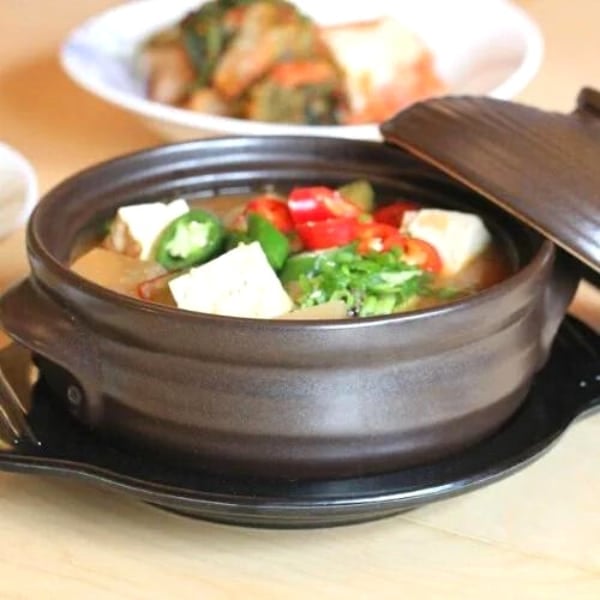
Korean Stone Bowl Cooking Pot
An essential part of many Korean winter dishes is the stone bowl (dolsot) cooking pot. This can be used to make dishes such as dolsot bibimbap, kimchi jjigae, and many other hot soups and stews.
Cookbooks not your thing? Check out the Baek Jong Won YouTube channel. He’s one of Korea’s most famous chefs and you can find his restaurants all over the place. He can teach you to make tteokbokki and many other tasty Korean winter foods.
Travelling To Korea This Winter?

Do you dream of seeing the royal palaces of Seoul covered in snow whilst munching on a hotteok? Want to experience freezing cold temperatures (and below) with a bowl of tteokbokki? Not sure where to visit and what to do during this frosty season?
Then check out some of my other articles about travelling to Korea during winter for the best places to see snow and winter activities to enjoy.
Where To See Snow In Korea: Korea is blessed with thousands of mountains, most of which see lots of snowfall in winter. Find out the best places to see snow across Korea.
Discover the best Korean winter activities, including ice fishing, sledding, snowboarding and lots more, There’s always something fun to do during winter in Korea.
Jeju Island In Winter: One of my favourite places to visit during winter is Jeju Island, a semi-tropical wonder of the world that has snow, fresh oranges, and palm trees all in one place. You can get lots of unique Korean winter foods from the markets in Jeju City and Seogwipo.
Liked This? Pin It For Others
If you enjoyed reading this article, then please share this with your friends on Pinterest.

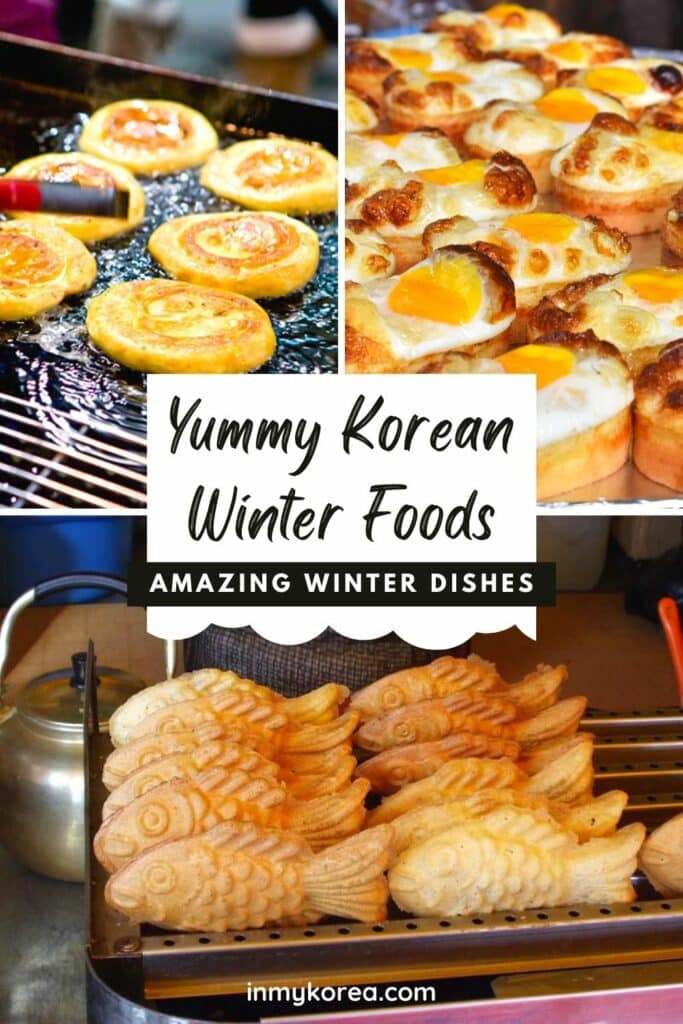
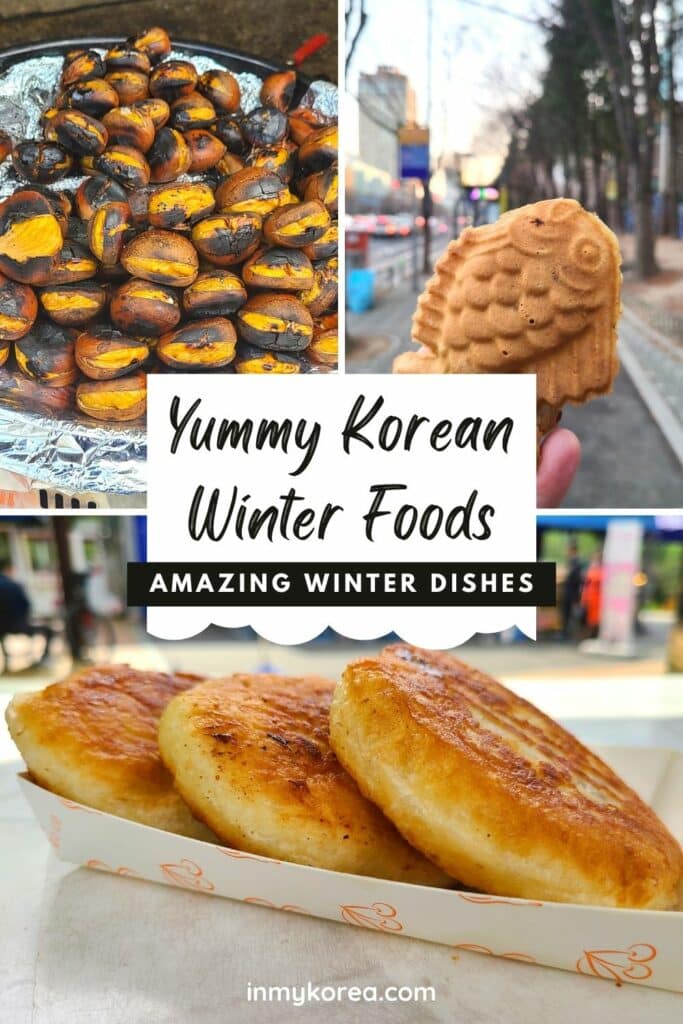




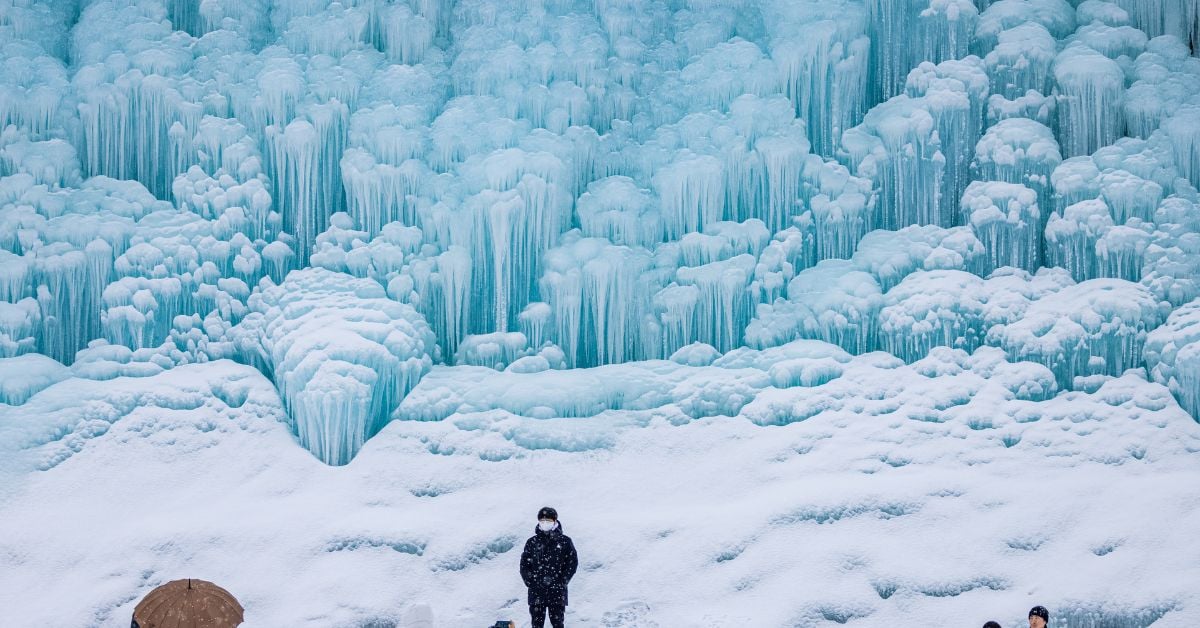

I really enjoy your article this is the first one i have come in contact with and will definitely be looking forward for more to read. My husband is Korean and i love the Korean culture, we plan on visiting Korea for the first time since we married. I am excited and reading your article only adds more enthusiasm. Thank you ,
Thanks for reading 🙂 Hope you have a fun time planning your travels to Korea!